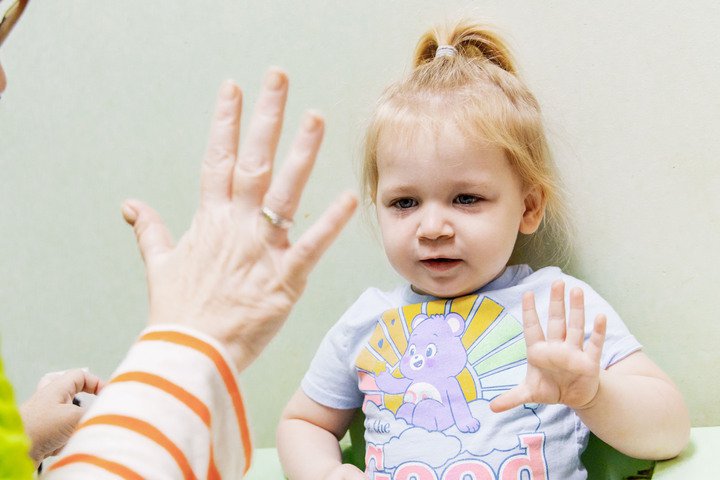
Reaching our peak potential as a person is essential for everyone. But individuals with autism spectrum disorder (ASD) or other developmental disabilities may require extra assistance due to their unique behavior, communication, and social skills challenges. ABA therapy is widely used in developmental preschools, which is crucial in supporting children with ASD.
Fortunately, applied behavior analysis (ABA) therapy offers the tools and support to help individuals with ASD reach their full potential.
In this article, we will discuss how ABA therapy works and how it empowers children with ASD to overcome life challenges and nurture their unique strengths.
Read on to discover how ABA therapy can benefit your child.

Understanding ABA Therapy
ABA therapy is a type of therapy that focuses on analyzing and modifying behavior to improve a person's social, communication, and learning skills.
The principles of ABA therapy are based on the science of behaviorism and involve breaking down complex behaviors into smaller more manageable parts and then using positive reinforcement to encourage desired behaviors.
It is also data-driven and evidence-based, meaning that treatment plans are tailored to the individual and are constantly assessed and modified based on progress.
Primary Principle of ABA Therapy
Positive reinforcement is one of the fundamental principles of ABA therapy.
It involves providing a reward or praise in exchange for a desired behavior, which helps to strengthen that behavior over time. This can be as simple as giving a high five, hug, or verbal compliment for completing a task or exhibiting positive behavior.
Positive reinforcement motivates children with autism to continue performing desired behaviors, as they associate these actions with receiving a positive outcome. This approach also helps create an enjoyable learning environment for the child, encouraging active participation and engagement in therapy sessions.
Positive reinforcement also helps build confidence and self-esteem in children with autism since they get to experience the satisfaction of accomplishing tasks and receiving positive feedback.
Addressing Behavioral Challenges
Children with ASD can face various behavioral challenges that can be disrupting, limiting, and challenging for both the child and their family. Here are some common behavioral challenges:
- Aggression: Some children with ASD display aggressive behavior, such as hitting, kicking, biting, or throwing objects.
- Tantrums: Tantrums are a common behavioral challenge in children with ASD. These outbursts can be triggered by changes in routine, sensory overload, difficulty communicating their needs, or frustration.
- Self-stimulatory behaviors: Self-stimulatory behaviors are repetitive, such as hand flapping, rocking, or repeating words or phrases.
- Difficulty with social skills: Children with ASD can struggle with social skills, such as initiating conversation, maintaining eye contact, and understanding social cues.
- Sensory issues: They can also face sensory challenges, resulting in behaviors such as avoiding certain stimuli or seeking out sensory input in unique ways.
Behavior modification techniques are at the core of ABA therapy. They include the following:
Positive Reinforcement
As stated earlier, positive reinforcement is one of the key strategies used in ABA therapy. Let's say a child has a habit of rocking back and forth; a therapist can try to get the child to do something else by rewarding them when they engage in a different behavior, like playing with a toy or talking with others.
Modeling
In ABA therapy, modeling is a technique used by therapists to teach new skills to children. It involves the therapist demonstrating the skill themselves that they want the child to learn. For instance, if the child is learning to play with others, the therapist may model the desired behavior by playing with the child and showing them how to take turns, share toys, and communicate effectively.
Picture Exchange Communication System
Picture Exchange Communication System (PECS) is a communication tool that uses pictures or symbols to help children with communication difficulties express their needs and wants.
ABA therapy teaches the child to exchange a picture for the desired item, facilitating their learning of communication skills. Over time, the child can use pictures to form sentences and communicate with others. PECS is an effective tool for children who have difficulty with verbal communication.
Developmental Preschools
Developmental preschools, combined with Applied Behavior Analysis therapy, can offer a powerful tool for promoting personal growth in children with autism. Through a combination of specialized curriculum, social skills training, and targeted behavioral interventions, children can learn to overcome challenges and develop new skills that will serve them throughout their lives.
At developmental preschools like those offered by Easterseals, children receive individualized attention from trained professionals who understand the unique needs of children with autism, providing a supportive environment for growth and development.
Developing Communication Skills
Developmental preschools are designed to support young children's overall growth and development by focusing on critical growth areas, such as relationships, exploration and learning, communication, playing, and moving.
But some children face unique challenges that require additional support.
Children with ASD, for instance, often struggle with communication difficulties, including speech delays, language deficits, and social communication challenges. These difficulties can significantly impact a child's ability to interact with others, leading to frustration and isolation.
Fortunately, developmental preschools can use ABA therapy to help children with ASD develop the skills they need to communicate effectively and interact with others meaningfully.
Functional Communication Training
Functional communication training (FCT) is a key component of ABA therapy for communication challenges.
FCT works by identifying the behavior the child uses to communicate their needs, such as crying or screaming, and replacing it with a more appropriate communication method, such as using words or gestures.
The therapist first identifies the specific needs or wants that the child is trying to communicate through their behavior. Then, they teach the child an alternative way to communicate those needs or wants, such as using a picture or word.
The therapist also reinforces the appropriate communication by rewarding the child when they use the new communication method to express their needs.
Through repeated practice and positive reinforcement, the child learns that using the new communication method is more effective than their previous behavior. As a result, they are more likely to use the new method to communicate their needs in the future.
Building Social Skills
Those with ASD also experience significant difficulties with interacting socially, understanding social cues, and forming relationships. ABA therapists use a variety of methods to address these challenges. One evidence-based method that developmental preschools utilize is social skills training.
Social Skills Training
Social skills training is a type of ABA therapy that teaches individuals with social difficulties how to communicate, solve problems, and build relationships. It involves group sessions where individuals can practice and receive feedback on their social interactions.
The following are specific examples of social skills that ABA therapy targets:
- ABA therapists can use role-playing exercises to teach children how to initiate and maintain conversations, share toys or games, and take turns. Perspective taking is also valuable to learn as it helps in understanding and responding appropriately to the thoughts and feelings of others.
- Social stories are useful for instructing children with ASD about social expectations and how to respond to different social situations.
- ABA therapy can also teach children how to better understand social cues, such as body language, tone of voice, and facial expressions.
Developing Life Skills
For those with ASD, life skills are crucial to learn self-care, independence, and community participation, yet acquiring and mastering these skills can be challenging and result in daily-living difficulties.
One of the ways that ABA therapy targets and develops life skills is through the use of functional skill assessments (FSAs) and individualized programming.
Functional Skill Assessments
FSAs identify areas where individuals need improvement in life skills. The assessments involve observing the individual in various scenarios to determine their strengths and weaknesses and to identify particular life skills that require development.
For example, observing an individual during self-care tasks, such as bathing, dressing, or cooking, can identify specific skills that need development, like washing themselves properly, dressing appropriately, or preparing simple meals independently.
Individualized Program
An individualized program is created based on the specific life skills identified from the FSA. It tailors to individual needs and aspirations and employs specific strategies and techniques to develop the identified life skills.
For example, a program to improve self-care skills might include the following:
- Techniques for breaking down tasks.
- Regular practice.
- Gradually increasing the level of difficulty.
The benefits of life skills training can extend far beyond childhood. As children with ASD transition to adulthood, the skills acquired through ABA therapy can help them lead more fulfilling and independent lives, with greater opportunities for employment, social participation, and community involvement.
Personalized Treatment Approach
ABA therapy must have a personalized treatment approach because everyone with ASD has unique strengths, weaknesses, and learning styles. What works for one person may not work for another.
The ABA Therapy Process
ABA therapy involves continuous assessment and data collection to modify treatment plans based on the child's progress, including collecting data on the child's behavior, tracking progress, and making necessary adjustments to the treatment plan.
The ongoing assessment ensures that the therapy is tailored to the child's current needs and that progress is made toward the established goals. If progress is not made, the ABA therapist will modify the treatment plan to better meet the child's needs.
Collaboration is another key component of ABA therapy. Parents, caregivers, and other professionals are actively involved in the treatment process, working with the ABA therapist to implement strategies and promote the generalization of life skills. This collaborative approach ensures that everyone involved is working toward the same goals and that the child receives consistent support.
Give Your Child a Head Start with ABA Therapy
ABA therapy is a valuable intervention for supporting children with ASD. It effectively addresses behavioral challenges through behavior modification techniques and improves communication, social, and life skills for a better quality of life.
As a result, we highly recommend that readers consider ABA therapy an effective and beneficial intervention to help children with ASD unleash their full potential.
Your child can thrive with the right intervention and support. Contact us to learn more about ABA at Easterseals.

